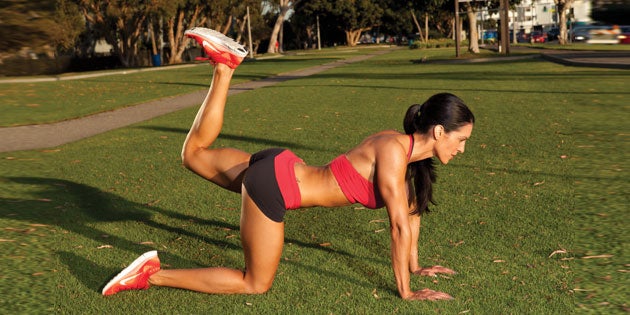If you’ve been doing endless squats and lunges but still feel like your glutes aren’t quite getting the message, it’s time to introduce a small but mighty move into your routine—the fire hydrant exercise.
Yes, it sounds a little funny. Yes, it looks a bit awkward at first. But trust me, fire hydrants are one of the most effective glute isolation exercises you can do. They target the gluteus medius—the often-neglected muscle that helps shape, stabilize, and lift your backside.
So if you’re chasing that firm, sculpted butt (and want to build real strength too), let’s dive into why fire hydrants should be on your workout list—and how to do them the right way.
What Is the Fire Hydrant Exercise?
The fire hydrant is a bodyweight move performed on all fours. It involves lifting one bent leg out to the side, similar to how a dog lifts its leg next to a fire hydrant (hence the name). It may not look like much, but the burn kicks in fast when you do it right.
This movement targets the outer glutes, hips, and core, helping to improve both shape and stability. And since it’s a low-impact move, it’s suitable for all fitness levels.
Why It Works for Glute Toning
Many popular glute moves—like squats and deadlifts—tend to focus on the gluteus maximus, the largest part of the butt. Fire hydrants go deeper, activating the gluteus medius and minimus, which play a big role in hip stability and overall muscle definition.
Here’s what makes fire hydrants so effective:
- Isolates the side glutes, which often don’t get enough attention
- Improves hip mobility, which helps in other compound lifts
- Enhances balance and core strength
- Can be done anywhere, with or without resistance
When added into your regular strength or lower-body workout, this move balances out your glute training and helps build that round, lifted shape.
How to Do the Fire Hydrant (Step-by-Step)
All you need is a mat and a little space.
Step 1: Start on all fours, with your hands directly under your shoulders and knees under hips. Keep your back flat and core engaged.
Step 2: Without shifting your weight too much, lift your right leg out to the side while keeping your knee bent at 90 degrees.
Step 3: Pause at the top (just above hip level), squeeze your glute, and slowly return to the start.
Step 4: Repeat for 12–15 reps, then switch to the other side. Aim for 2–3 sets per leg.
Form tips:
- Keep your hips square to the floor—don’t let them open up.
- Move with control. No swinging or rushing.
- Focus on squeezing your glutes at the top of each rep.
It’s all about that mind-muscle connection. The more you focus on activating your glutes, the better the results.
Make It Harder: Fire Hydrant Variations
If bodyweight fire hydrants start to feel too easy (which will happen if you’re consistent), try leveling up with these spicy upgrades.
1. Resistance Band Fire Hydrants
Place a mini band above your knees. This adds constant tension throughout the movement and really fires up your outer glutes.
2. Fire Hydrant Pulses
At the top of each rep, pulse your leg up and down for 5–10 seconds before lowering. It burns, but in the best way.
3. Weighted Fire Hydrants
Strap on ankle weights for added resistance without sacrificing mobility.
4. Elevated Fire Hydrants
Place your supporting knee on a yoga block or step to increase the range of motion.
Mix and match these variations to keep your glute workouts fresh and effective.
Pair It With These Moves for Maximum Impact
Fire hydrants work best when combined with other glute-focused exercises. Try pairing them with:
- Glute bridges
- Donkey kicks
- Hip thrusts
- Bulgarian split squats
- Lateral band walks
Doing these together creates a balanced glute circuit that hits all angles and muscle groups.
How Often Should You Do Fire Hydrants?
To see real results, aim to train your glutes 2–3 times a week. Fire hydrants can be added to your leg day, warm-up, or even a quick home circuit on off-days. The key is consistency and progressive challenge.
Start with bodyweight, then gradually add bands or weights to push your muscles harder.
Why Fire Hydrants Aren’t Just for Looks
Yes, a toned butt is a great perk. But there’s more to fire hydrants than just aesthetics.
- They improve hip mobility, which helps with squats, lunges, and running.
- They enhance stability, reducing the risk of injury in your lower back and knees.
- They help correct muscle imbalances, especially if you sit a lot or have weak glutes.
Basically, this move supports both your fitness goals and your everyday movement.
Final Thoughts
Fire hydrants might look simple, but don’t underestimate their power. They’re one of the best bodyweight exercises to tone, shape, and strengthen your butt—especially the side glutes that often get left behind.
Add them into your weekly workout routine, focus on form, and don’t be afraid to level up with resistance once your body is ready. In a few weeks, you’ll feel the difference. In a couple of months, you’ll see it too.










